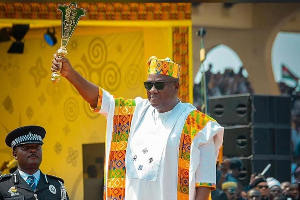Management is the “art of getting things done through other people,” Mary Paker Follet.
Often times management of some entities within both public and private sectors complain of under-performance of some employees at all levels (strategic, middle management and tactical) of their respective organizations. Typically, this “poor performance” by some elements within the outfits is a result of low-morale, tardiness, absenteeism, staff attrition rates, unharmonious and non-conducive working environment, inter-personal hostilities, conflicts and concerns, unethical behaviours and practices and related unfavourable conditions and negative self-governance attributes.
The key to managing people in ways that lead to profit, enhanced productivity, innovation, creativity, growth etc. lies in how you think about your organization and its people. When you look at your people, do you see costs to be reduced? Or, when you look at your people do you see intelligent, motivated, trustworthy individuals - the most critical and valuable strategic assets your organization can have?
Based on the above, managers (public and private) must be challenged to invest in people and their talents. Organizations which do invest in people outperform the ones that do not. High-performing organizations thrive on strong foundations of human capital (the economic value of people with job-relevant abilities, knowledge, skills, ideas, energies and commitments).
First and foremost, it is the Human Resource Management (HRM) process that will determine or assist in rationalizing the subject matter in an effective manner to some degree. It is all about attracting, developing and maintaining a talented and energetic workforce. If an organization cannot do this right and does not have the right people available to do the required work, it has very little chance of long-term success.
The goal of human resource management is to build organizational performance capacity through people; to ensure that highly capable and enthusiastic people are always in the right positions with the support they need to be successful.
According to John R. Schermenhorn Jnr in “Management 10e, 2010” the three major responsibilities of Human Resource Management are typically described as:
a. Attracting a quality workforce – human resource planning, employee recruitment and employee selection.
b. Developing a quality workforce – employee orientation, training and development, and performance management.
c. Maintaining a quality workforce – career development, work-life balance, compensation and benefits, retention and turnover and labour-management relations.
In addition to the above, it would be prudent for Top Management (public and private) to have in place a safe working environment and apply the underlying principles of “emotional intelligence” whereby management elements can express and control their emotions as well as their ability to perceive, analyze, interpret, understand and appropriately respond to other peoples’ emotions at the workplace and within the community where they operate.
This approach and related effective management tools like teamwork, communication, participatory decision-making, training, continuous improvement and professional and career development etc. will lead to positive results and enhanced productivity.
Opinions of Thursday, 6 August 2020
Columnist: Charles Manu


















